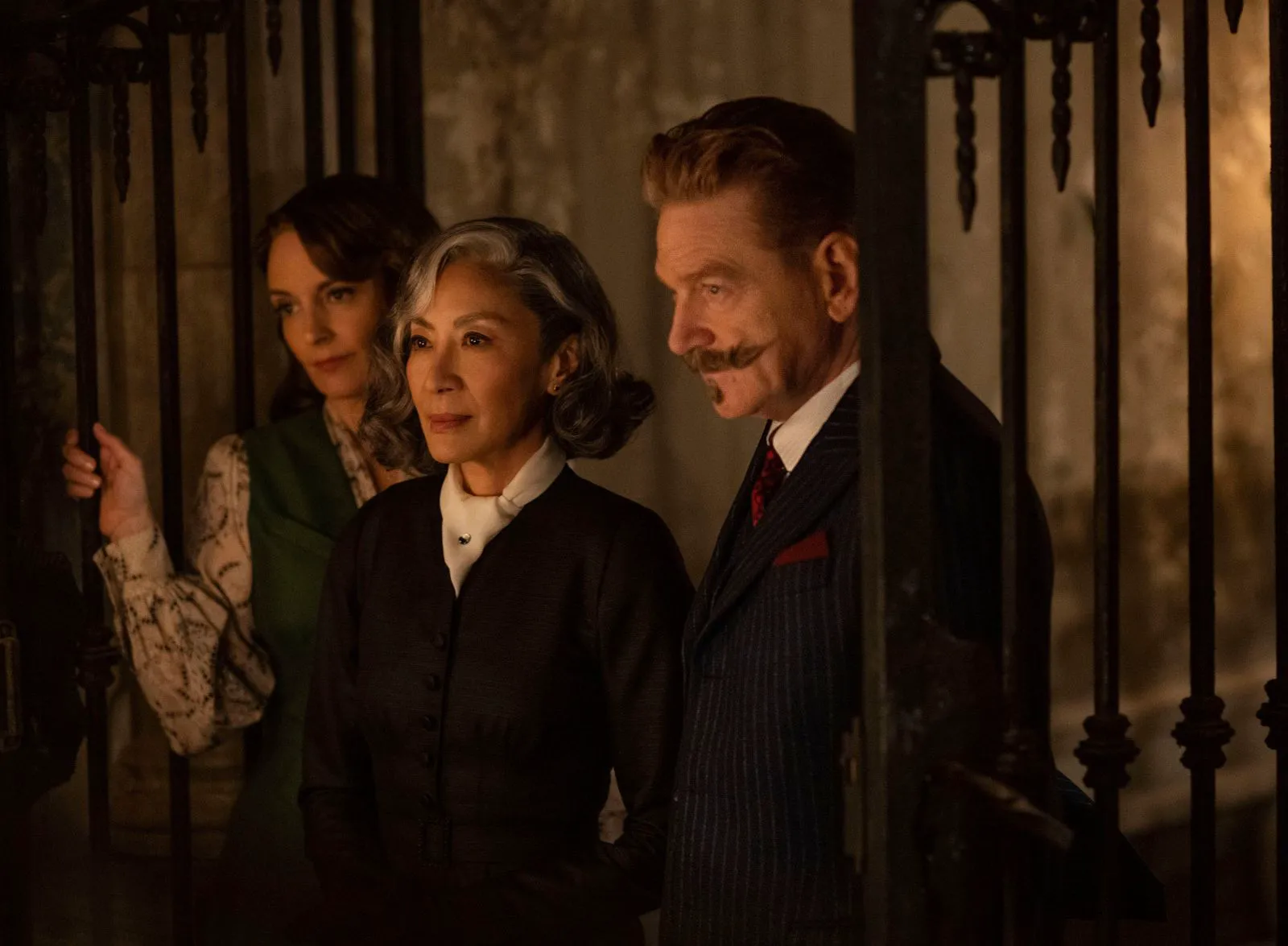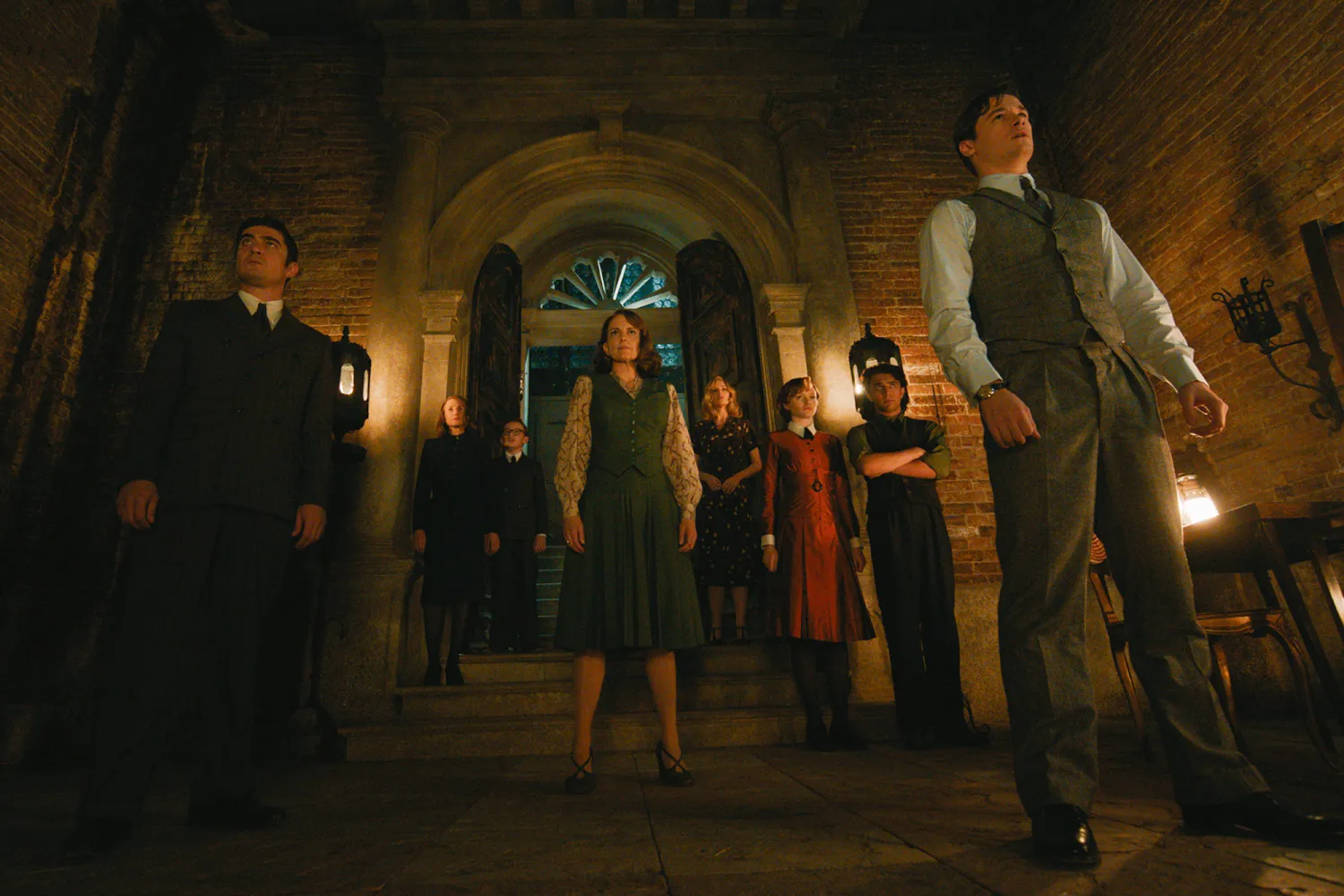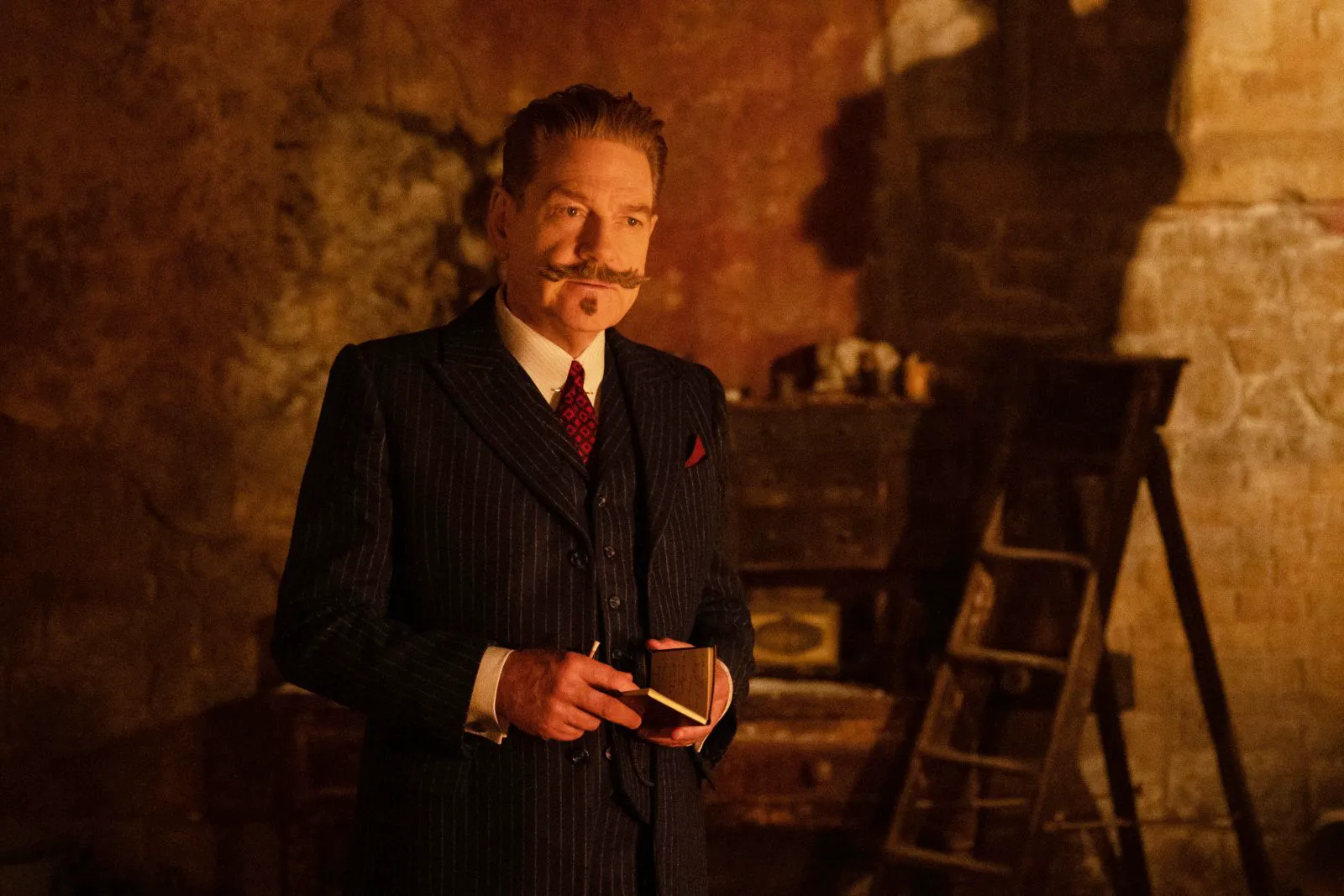“Murder on the Orient Express” reopened the grand doors to Agatha Christie’s worlds of mystery, which never go out of style, even if viewers know who the killer is in advance. “Death on the Nile” was supposed to continue Hercule Poirot’s grand procession on the big screens, but it didn’t work out: the film was caught in ethical turbulence due to the scandal surrounding Armie Hammer, and the studio refused to reshoot the picture. Whether it was the general nervousness around the release or the familiar material taking its toll, Poirot’s Egyptian investigation looked less convincing than the interrogation on the train. “A Haunting in Venice” is Kenneth Branagh’s third attempt to grasp the depths of the Belgian detective’s personality, and so far the most successful.

Michelle Yeoh as Mrs. Reynolds in a still from “A Haunting in Venice”
A Halloween Mystery in Venice
On Halloween, respectable ladies and gentlemen find themselves in a gloomy mansion with secrets, but not against the backdrop of misty British landscapes, but in ever-sinking Venice. However, Italy is not without its fog either. After a children’s party with costumes and sweets, adults are in for their own game: a séance with the medium Mrs. Reynolds (an impressive Michelle Yeoh). Hercule Poirot (Kenneth Branagh), who is now only concerned with morning pastries, is tricked by his old writer friend Ariadne Oliver (Tina Fey) into attending a party with a murder. And now he is forced to deal not only with the criminal incident of the evening, but also with the mysterious death that occurred several years ago in this cursed house.
Ghosts and Superstition
Ghosts and superstitions become full participants in the investigation: according to legend, during the plague, children from the mansion, which was then an orphanage, were left to die. Since then, rebellious souls have been haunting the living: whispering in their pillows, running around at night, confusing thoughts, and scaring the owner of the house, Rowena (Kelly Reilly), and her guests (among the invitees are Jamie Dornan, Riccardo Scamarcio, and Camille Cottin). Poirot is a man of reason, and therefore drives paranormal nonsense far from the corridors of thought. Kenneth Branagh, on the other hand, plays a mystical thriller with undisguised pleasure: he intensifies the colors, narrows the geometry of enclosed spaces, and offers the camera to look from unexpected angles. Dampness and mold bind the stone floor and the insides of the participants in the meeting with the medium, who, of course, found themselves trapped due to the storm. Outside, the elements rage, inside — ghosts and a murderer.

Kenneth Branagh as Hercule Poirot in a still from “A Haunting in Venice”
A Departure from the Original
If you are trying to remember whether Agatha Christie celebrated Halloween in Venice, we can disappoint you: no. Kenneth Branagh has for the first time allowed himself to break away from the original novel and embark on free composition based on motifs. The script is based on the book “Hallowe’en Party”, but the coincidences are only in general terms. This approach to the text will probably repel apologists of the “book is better” religion, but will attract fans of detective stories — the solution, as well as the murder itself, is strikingly different from the literary basis. No one is stopping you from calling “A Haunting in Venice” a film fanfic, but there is nothing wrong with the status: it was literary detectives who first became heroes of folk art, starting with Sherlock Holmes.

Kenneth Branagh as Hercule Poirot in a still from “A Haunting in Venice”
Breaking the Fourth Wall
Freedom from page frames allowed Branagh to ironize and break the fourth wall: the writer, drawing the tired detective into another case, is something like Agatha Christie’s alter ego (a similar technique was already used in the recent costume detective “See How They Run”). However, the flirtatious bridge remains more of an entertaining addition than a full-scale reflection on how authors used beloved characters, even when they dreamed of retiring. More interesting is the emphasis on the fact that Poirot’s entire life is endlessly connected with death: the Belgian detective’s visit to the evening is a sure sign that not all guests will survive the next dinner. The sad imprint of fate pushes Poirot to a well-deserved rest in the Eternal City, where there are no riddles and no investigations. As always, not for long.
“A Haunting in Venice” is a rather old-fashioned (or classic, as you like) detective story, which can be called an honest deal: the viewer gets exactly what they expect. Ghosts and mysticism are surprisingly organically intertwined with an investigation without a statute of limitations, Venice flaunts and captivates with gloomy charm, and Kenneth Branagh knocks down the mythical calm and arrogance from the gray hairs of Hercule Poirot, who, undoubtedly, will return.